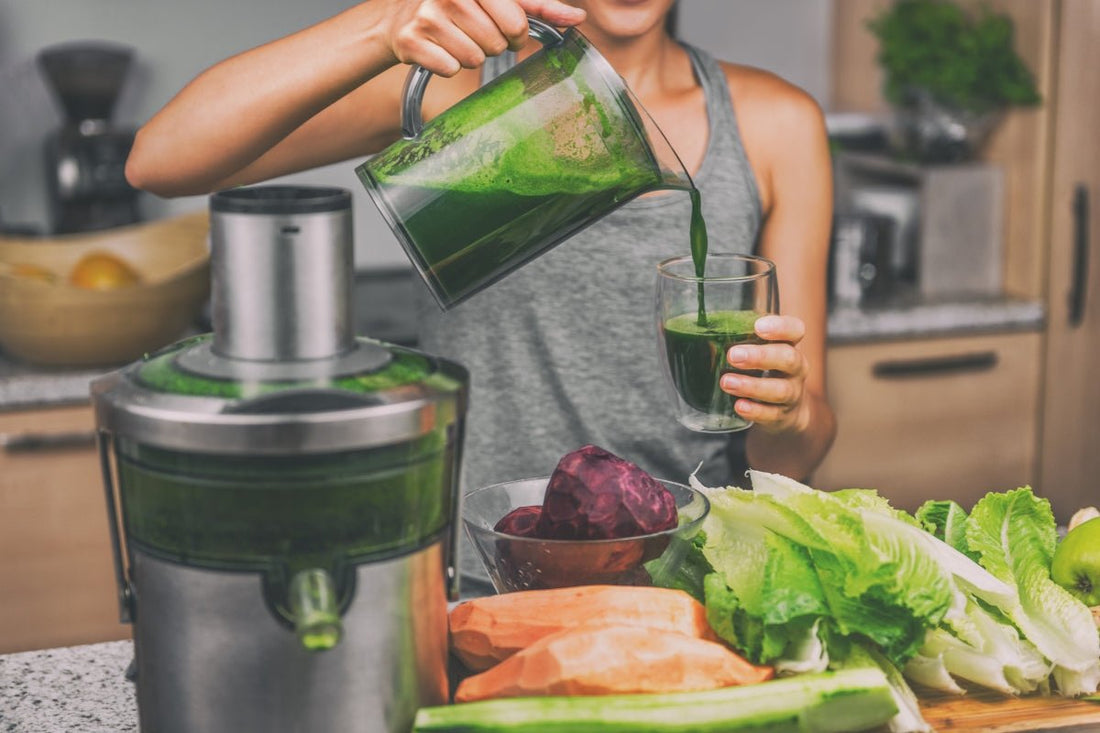
Navigating the art of juicing
Share
Embarking on a juicing journey holds a myriad of health benefits, but navigating this liquid wellness path requires savvy decision-making. We delve into the techniques and tips for effective juicing.
The right and wrong way to juice :
Mindful fruit juicing: While fruits offer antioxidants and beneficial enzymes, caution is crucial. Tropical fruits like mango and pineapple, high in natural sugars, demand careful consideration. Regular juicing, especially for those on a weight loss plan, may elevate blood sugar levels. Opt for occasional fruit juicing, leaning towards green apples or kiwis for sweetness, as they are relatively low in sugar.
Vegetable focus: Prioritise organic, raw green veggies for maximum nutrition in freshly pressed juice. This concentrated form is an excellent way to sneak more vegetables into your diet. However, juices should complement, not replace, the consumption of whole vegetables.
Cruciferous veggies caution: Exercise care when juicing cruciferous veggies raw, such as cabbage, collards, bok choy, kale, and broccoli. These vegetables contain goitrogens that may suppress thyroid function. Cooking deactivates goitrogens while preserving their health benefits.
Oxalic acid awareness: Raw spinach, beet greens, and chard contain oxalic acid, which may irritate the mouth and interfere with iron and calcium absorption. Consume these veggies in moderation, considering cooking or light steaming.
Best Veggies to Juice
• Cucumbers: Cleansing and beneficial for skin health.
• Celery: Anti-inflammatory and alkalising; reputed to lower blood pressure.
• Beets: Super liver cleanser and an excellent vegetarian source of iron.
• Carrots: Rich in beta-carotene, beneficial for eyesight, but use caution due to high sugar content.
• Kale: Is a versatile leafy green with a mild flavour that pairs well with other veggies in juices. A great source of several key nutrients, including vitamins A, C, and K
• Spinach: High in iron, alkalising, and great for skin health.
• Wheatgrass: A powerful detoxifier and alkalising agent, often considered one of the most popular vegetables for juicing. An incredibly nutrient-dense ingredient containing iron, phosphorus, magnesium, and copper, along with 17 different amino acids.
• Fennel: Excellent for digestion, reduces bloating; imparts a pleasant liquorice-like flavour.
• Additional options: Romaine lettuce, red bell peppers (high in vitamin C), parsley, cilantro, ginger, and even raw garlic for immune health.
Juicing techniques and tips
Juicing is more than tossing whole fruits and vegetables into your juicer and expecting tasty results. Proper preparation is key, considering juicer limitations and optimising the process for efficiency. Preparation is paramount:
• Chop items to fit small food chutes.
• Peel tough outer skins, peels, and pith, especially for citrus fruits.
• Remove seeds and hard pits to prevent damage to the juicer and bitter taste.
Line your pulp basket: Simplify cleanup by lining the pulp collection bin with plastic wrap. After juicing, pull out the wrap with pulp, making disposal efficient.
Enlist the dishwasher: Check if juicer parts are dishwasher-safe for easy and effective cleaning.
Don't let juice sit around: Freshly made juice, unpasteurised and preservative-free, is best consumed immediately.If storing, refrigerate and consume within 24 hours for optimal freshness.
Use Dry items sparingly: Avoid juicing ingredients with low water content, like coconut, sugar cane, and grains.
Choosing the Right Juicer
Centrifugal juicers: are suitable for some fruits but struggle with leafy greens. Fast and affordable. Ideal for occasional juicing.
Cold-press juicers: though pricier, excel in extracting juice from fibrous vegetables like kale and spinach.
Slow (Masticating) juicer: Slower but efficient. Preserves more nutrients due to low speed. Suitable for various ingredients, including leafy greens.
Citrus press or squeezer: Handy for citrus fruits. Manual operation suitable for small amounts. Limited to citrus fruits.
Juicing by hand: Quick for soft fruits. Requires strength and patience for larger quantities.
Blender juicing: Blend ingredients, then strain for juice. Versatile but more suitable for smoothies.
Steam juicer: Traditional method for processing fruits. Suitable for large quantities but occupies space. Preserves juice longer due to heating.
Choosing the Right Juicer
Before investing in a juicer, consider your usage frequency and preferences. Whether opting for a centrifugal or slow juicer, each has its merits. Additionally, explore alternative juicing methods like hand-squeezing or using a blender based on your needs.
How Long Can You Keep Juice?
Cold-pressed juice retains freshness for 2-3 days when stored in an airtight container at the bottom of the fridge. Limiting oxygen exposure during juicing and storage preserves vitamins. Steam-juiced juice lasts longer due to pasteurisation but may lose some nutrients.
What to Do with Fruit and Vegetable Pulp
Maximise sustainability by repurposing pulp:
• Composting: Environmentally friendly disposal.
• Add to a Smoothie: Blend pulp with fresh ingredients.
• Add to a Soup: Enhance soups with complementary pulp.
• Make Tea: Create aromatic tea blends with pulp and spices.
• Vegetable Patties: Incorporate pulp into patty mixtures.
• Enjoy for Breakfast: Enhance scrambled eggs.
• Spread on Bread: Mix with cream cheese for a savoury spread.
• Fritters: Use pulp in vegetable or fruit fritter recipes.
• Bake It: Add pulp to cake batters for flavour and moisture.
In conclusion, juicing is a versatile and healthful practice, with proper techniques, ingredient choices, and inventive ways to repurpose pulp contributing to a holistic juicing experience. We have made juicing a whole lot easier with our ready prepared superfood juices, simply, defrost, open and enjoy or add to your favourite smoothie. To order yours visit our shop here today.

